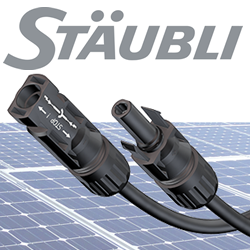Abengoa's Gigantic ‘Salt Battery' Stores Utility-Scale Solar Energy
Battery-Stored Solar Power Sparks Backlash From Utilities
Wind Turbine Bird Threat Overstated, Study Suggests
Why the hot money is chasing energy storage
U.S. Dept. of Energy Supports New Renewable Energy Storage System
China to offer tax breaks to solar power manufacturers
Solar power to overtake wind for the first time
Solar Power From Giant Mirrors Flows Into California's Grid
India To Build World's Largest Solar Power Plant In Rajasthan
China to limit construction of new solar panel factories
Photoflow is solar power and rainwater harvesting in one
Solar Power International Leads With Ideas, Education, Industry Luminaries
Why Firefighters Are Scared of Solar Power
Finance Firm Sees Wind, Solar Cost Plunge
Solar-cell manufacturing costs: innovation could level the field
Records 901 to 915 of 1584
First | Previous | Next | Last
Solar Power - Featured Product

